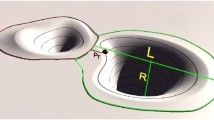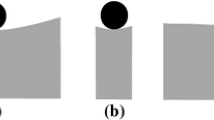Abstract
Resilience is a rehashed concept in natural hazard management—resilience of cities to earthquakes, to floods, to fire, etc. In a word, a system is said to be resilient if there exists a strategy that can drive the system state back to “normal” after any perturbation. What formal flesh can we put on such a malleable notion? We propose to frame the concept of resilience in the mathematical garbs of control theory under uncertainty. Our setting covers dynamical systems both in discrete or continuous time, deterministic or subject to uncertainties. We will say that a system state is resilient if there exists an adaptive strategy such that the generated state and control paths, contingent on uncertainties, lay within an acceptable domain of random processes, called recovery regimes. We point out how such recovery regimes can be delineated thanks to so-called risk measures, making the connection with resilience indicators. Our definition of resilience extends others, be they “à la Holling” or rooted in viability theory. Indeed, our definition of resilience is a form of controllability for whole random processes (regimes), whereas others require that the state values must belong to an acceptable subset of the state set.
Similar content being viewed by others
Notes
We also hinted at the possibility to use so-called stochastic orders.
References
Arnoldi, J.-F., Loreau, M., & Haegeman, B. (2016). Resilience, reactivity and variability: a mathematical comparison of ecological stability measures. Journal of Theoretical Biology, 389, 47–59.
Aubin, J.-P. (1991). Viability theory. Boston: Birkhäuser.
Carpentier, P., Chancelier, J.-P., Cohen, G., & De Lara, M. (2015). Stochastic multi-stage optimization. At the crossroads between discrete time stochastic control and stochastic programming. Berlin: Springer.
De Lara, M., & Doyen, L. (2008). Sustainable management of natural resources. Mathematical models and methods. Berlin: Springer.
Doyen, L., & De Lara, M. (2010). Stochastic viability and dynamic programming. Systems and control letters, 59(10), 629–634.
Doyen, L., & Saint-Pierre, P. (1997). Scale of viability and minimum time of crisis. Set-valued analysis, 5, 227–246.
Föllmer, H., & Schied, A. (2002). Stochastic finance. An introduction in discrete time. Berlin: Walter de Gruyter.
Holling, C. S. (1973). Resilience and stability of ecological systems. Annual Review of Ecology and Systematics, 4, 1–23.
Martin, S. (2004). The cost of restoration as a way of defining resilience: a viability approach applied to a model of lake eutrophication. Ecology and Society, 9(2), 8.
Martin, S., Deffuant, G., & Calabrese, J. (2011). Defining resilience mathematically: from attractors to viability. Understanding complex systems, (pp. 15–36). Berlin: Springer.
Muller, A., & Stoyan, D. (2002). Comparison methods for stochastic models and risk. New York: Wiley.
Rougé, C., Mathias, J.-D., & Deffuant, G. (2013). Extending the viability theory framework of resilience to uncertain dynamics, and application to lake eutrophication. Ecological Indicators, 29(Supplement C), 420–433.
Rougé, C., Mathias, J.-D., & Vulnerability, G. Deffuant. (2015). From the conceptual to the operational using a dynamical system perspective. Environmental Modelling & Software, 73(Supplement C), 218–230.
Shaked, M., & Shanthikumar, J. G. (2007). Stochastic orders. Berlin: Springer.
Acknowledgements
The author is indebted to the editor-in-chief, the advisory editor, and two reviewers. They supplied detailed critique, comments, and inputs which, ultimately, contributed to an improved version of the manuscript.
Author information
Authors and Affiliations
Corresponding author
Rights and permissions
About this article
Cite this article
Lara, M.D. A Mathematical Framework for Resilience: Dynamics, Uncertainties, Strategies, and Recovery Regimes. Environ Model Assess 23, 703–712 (2018). https://doi.org/10.1007/s10666-018-9595-5
Received:
Accepted:
Published:
Issue Date:
DOI: https://doi.org/10.1007/s10666-018-9595-5




